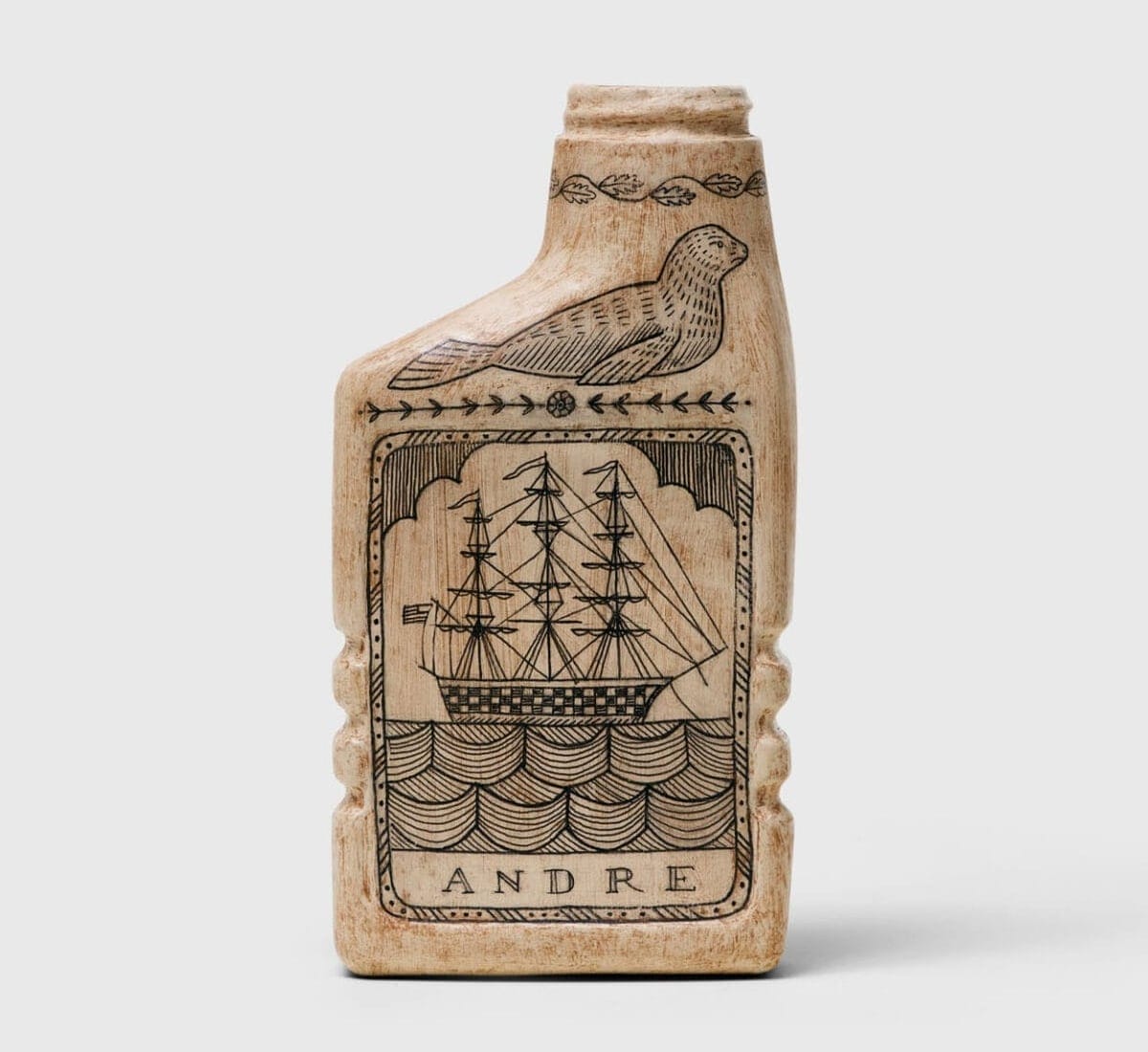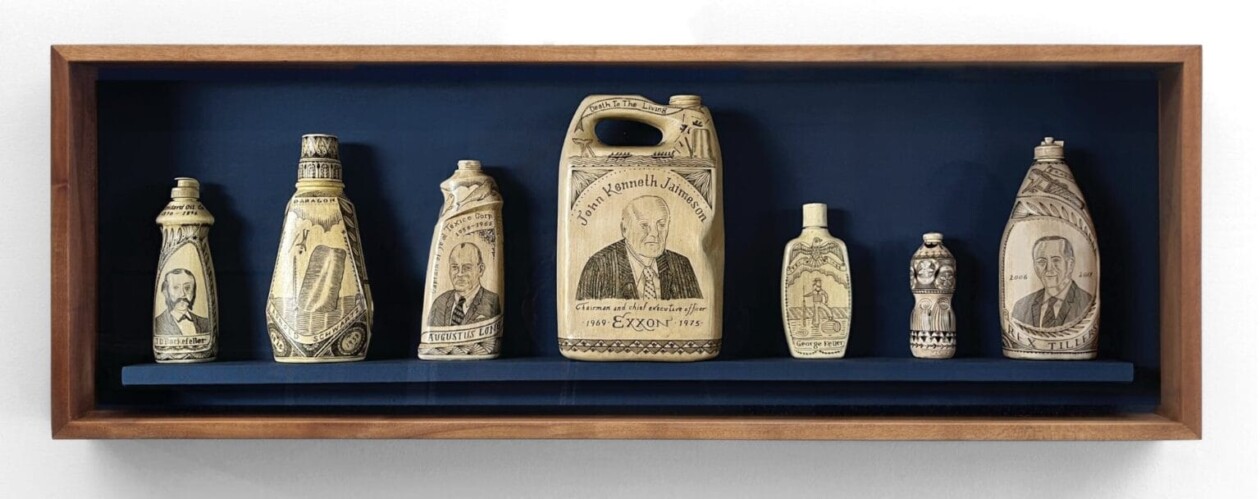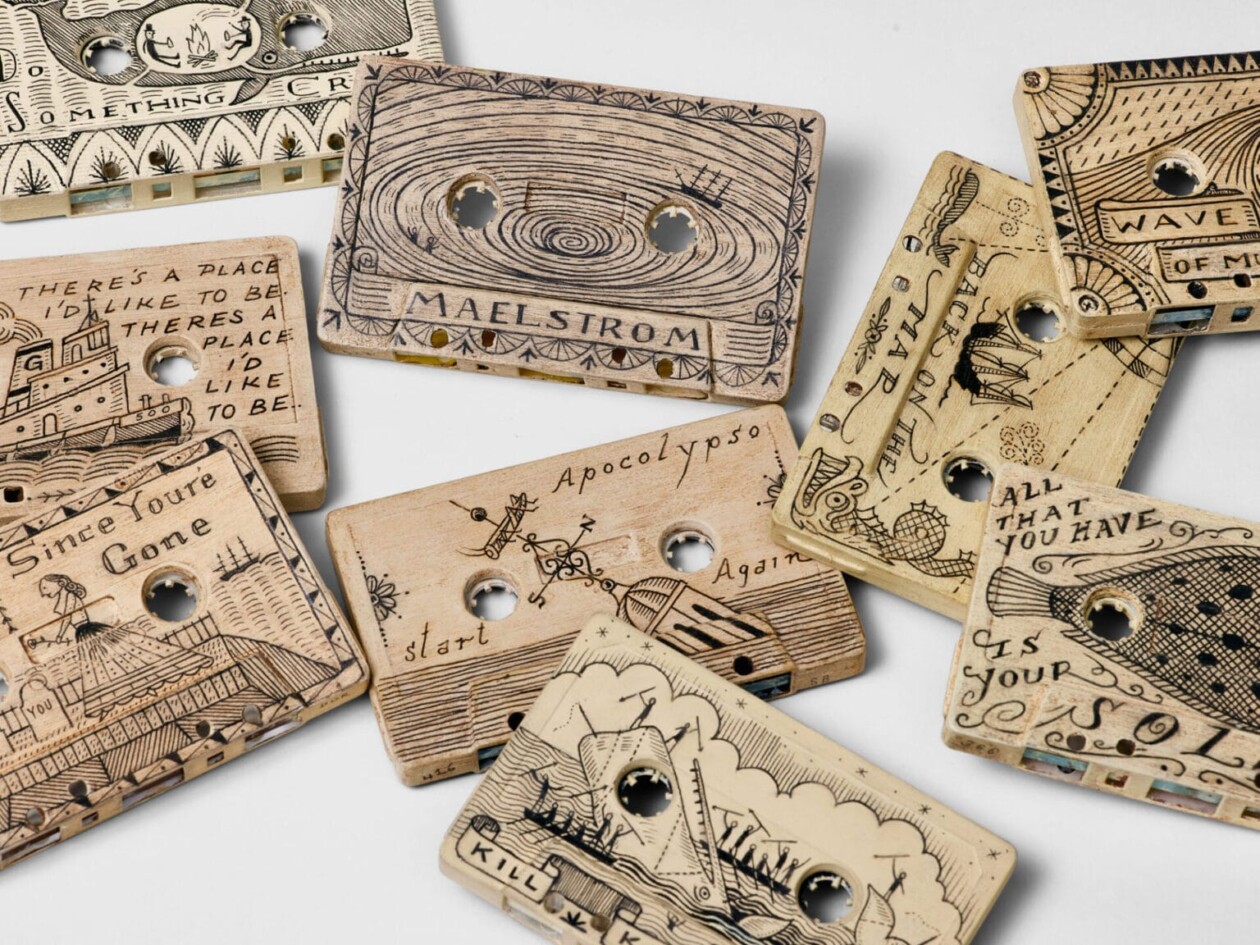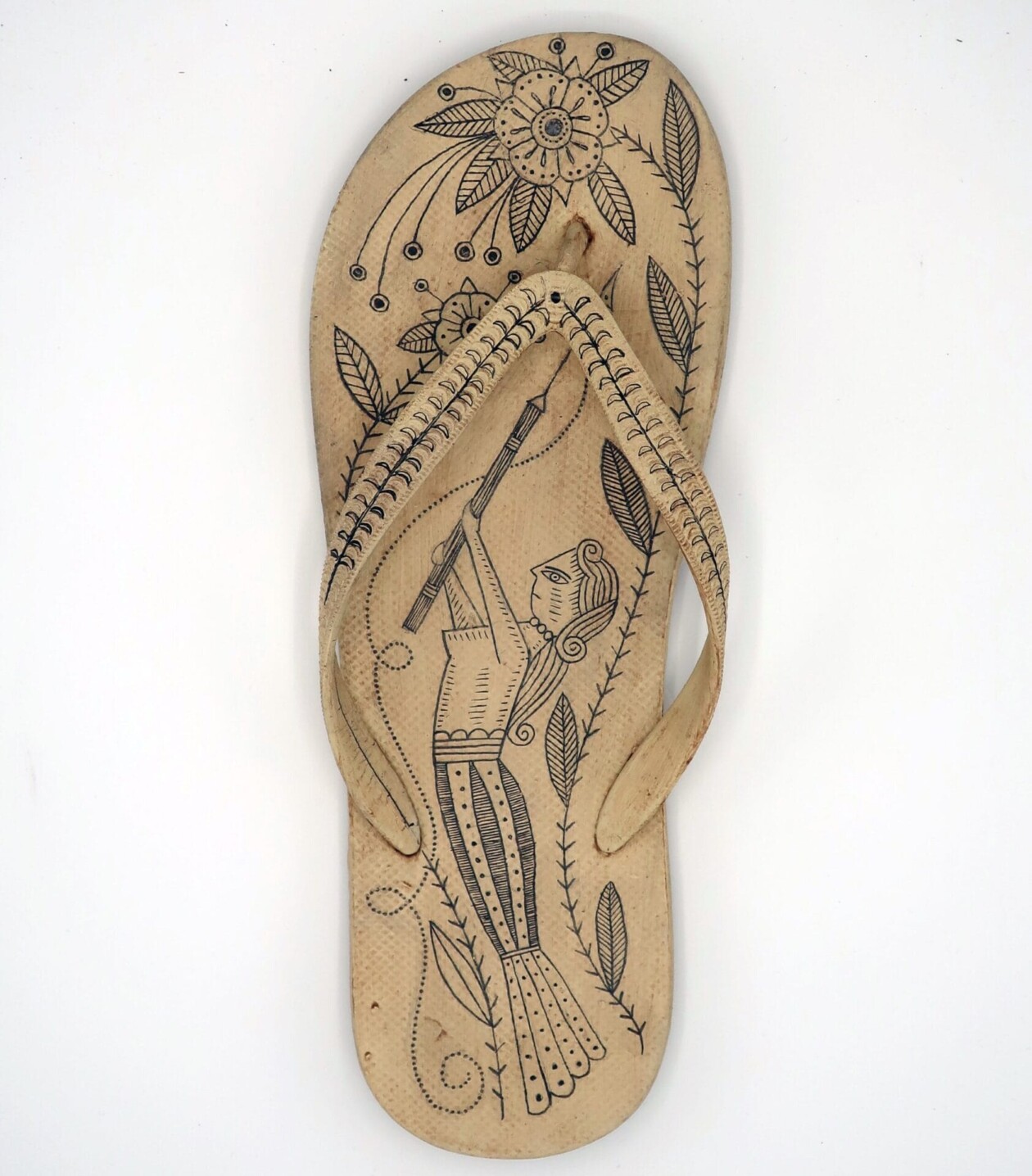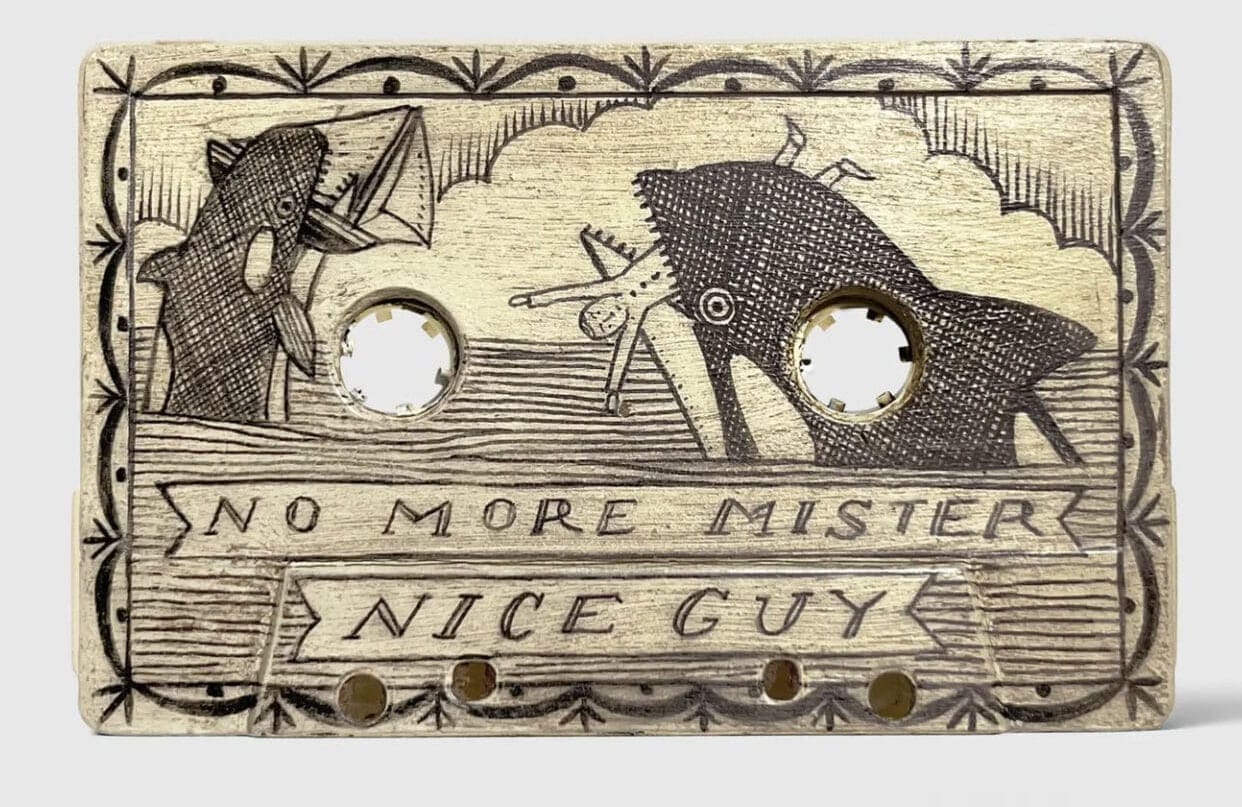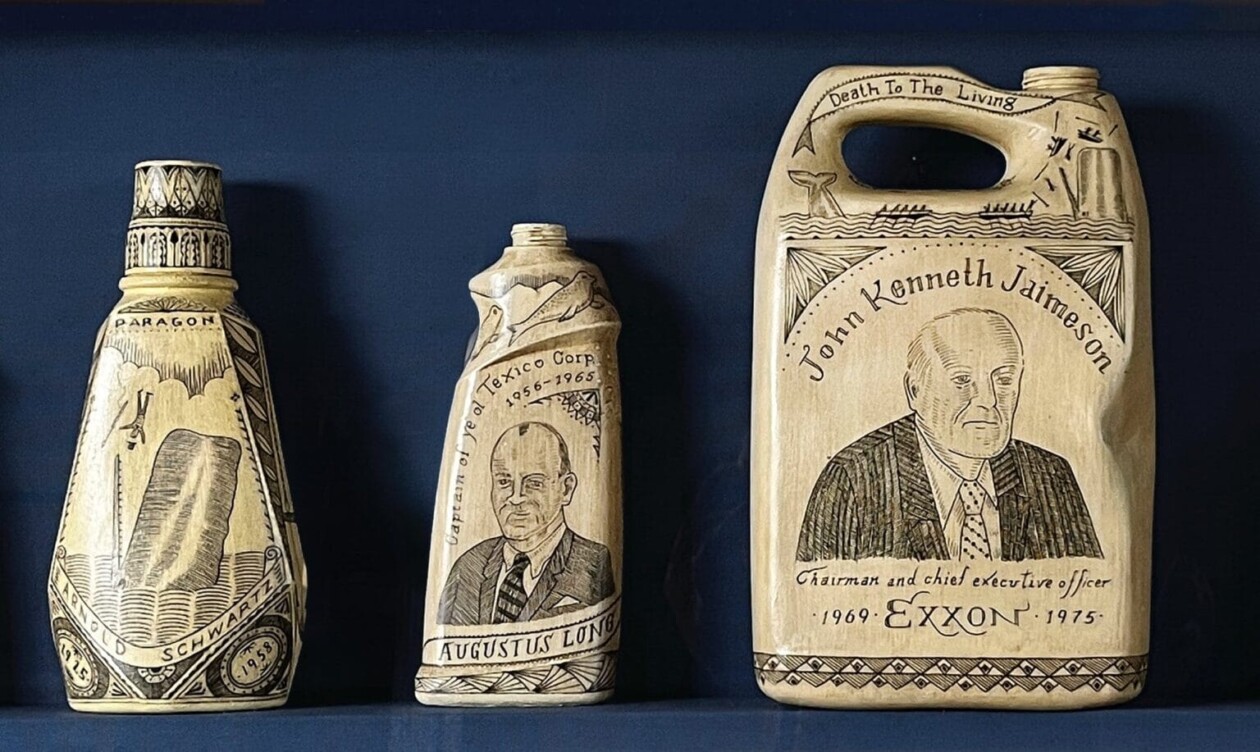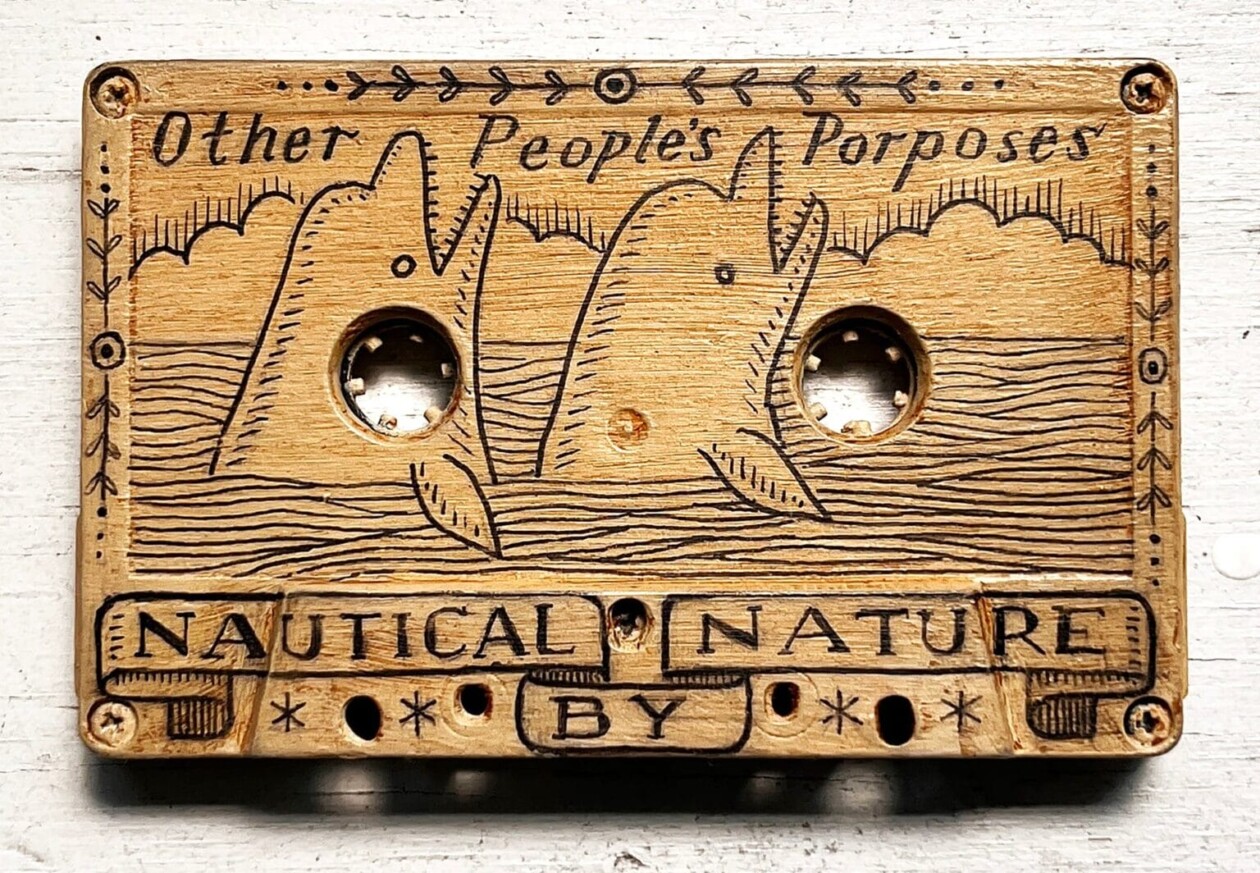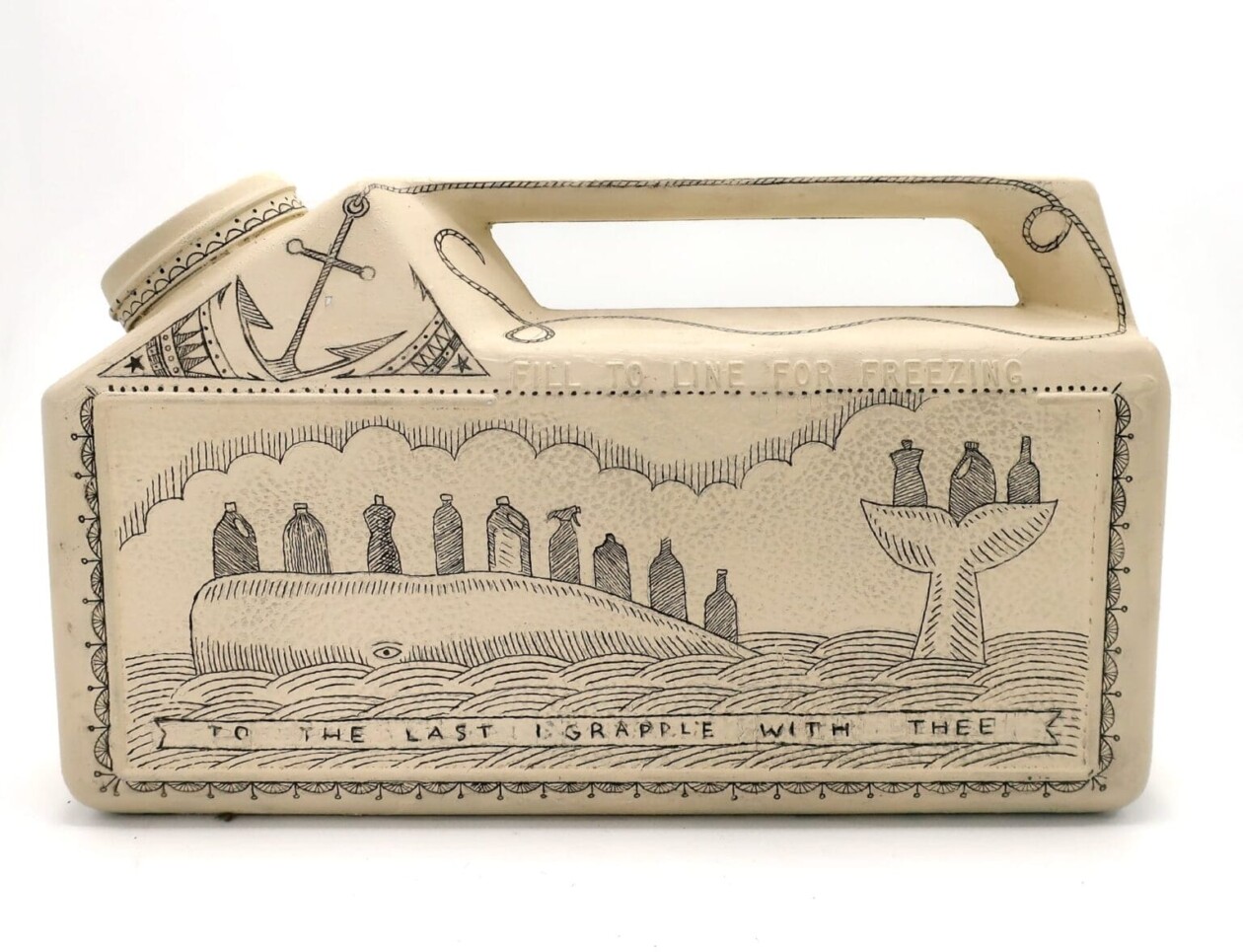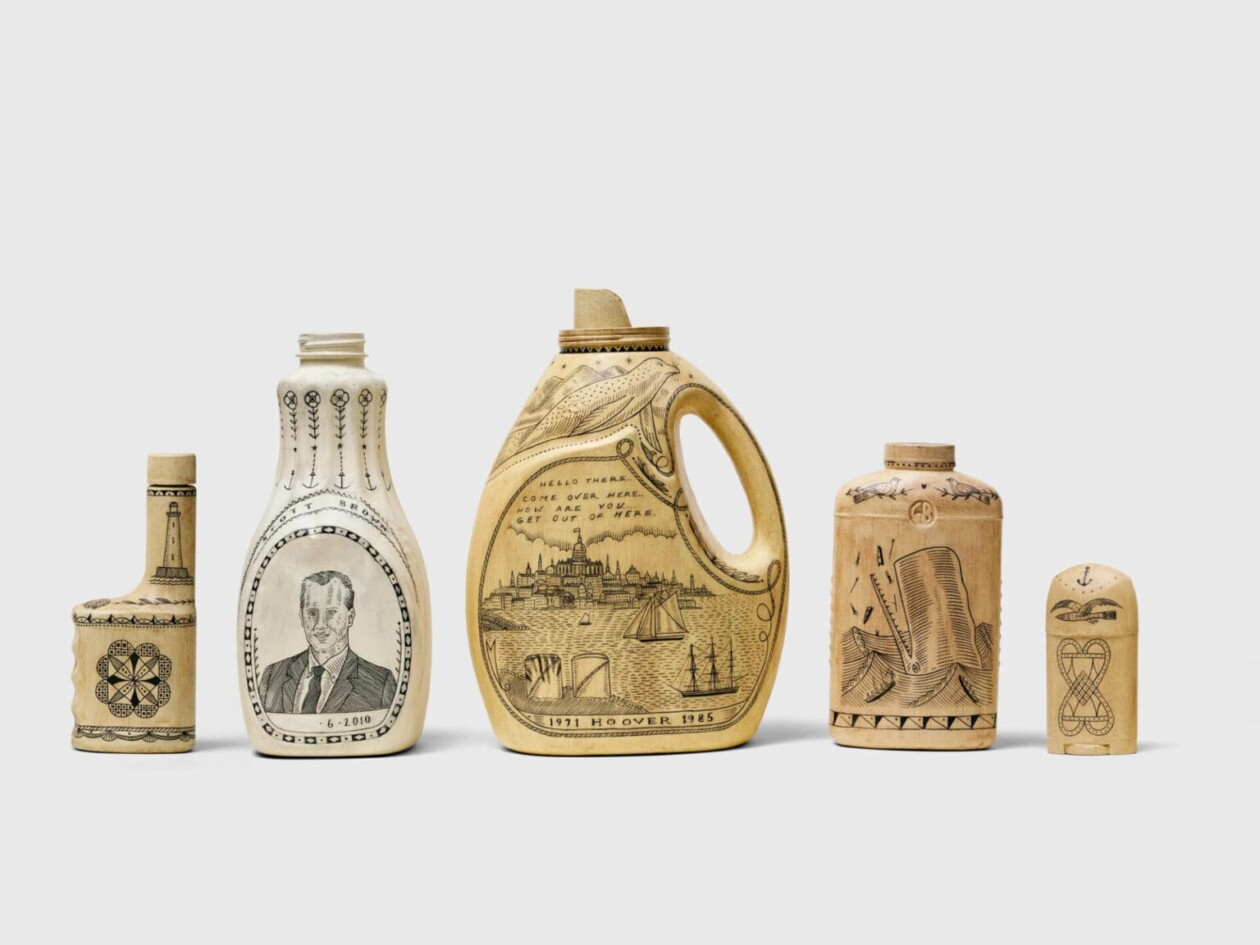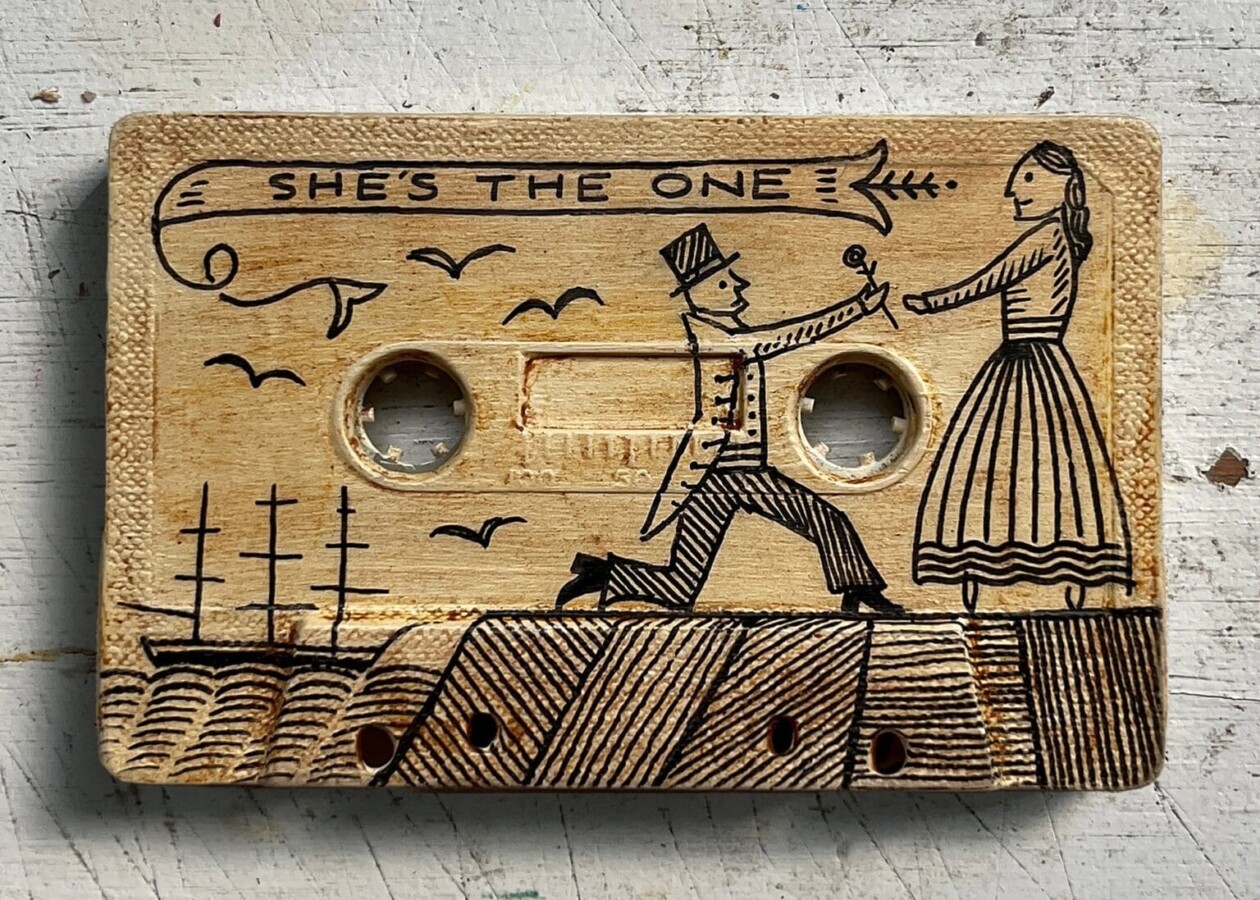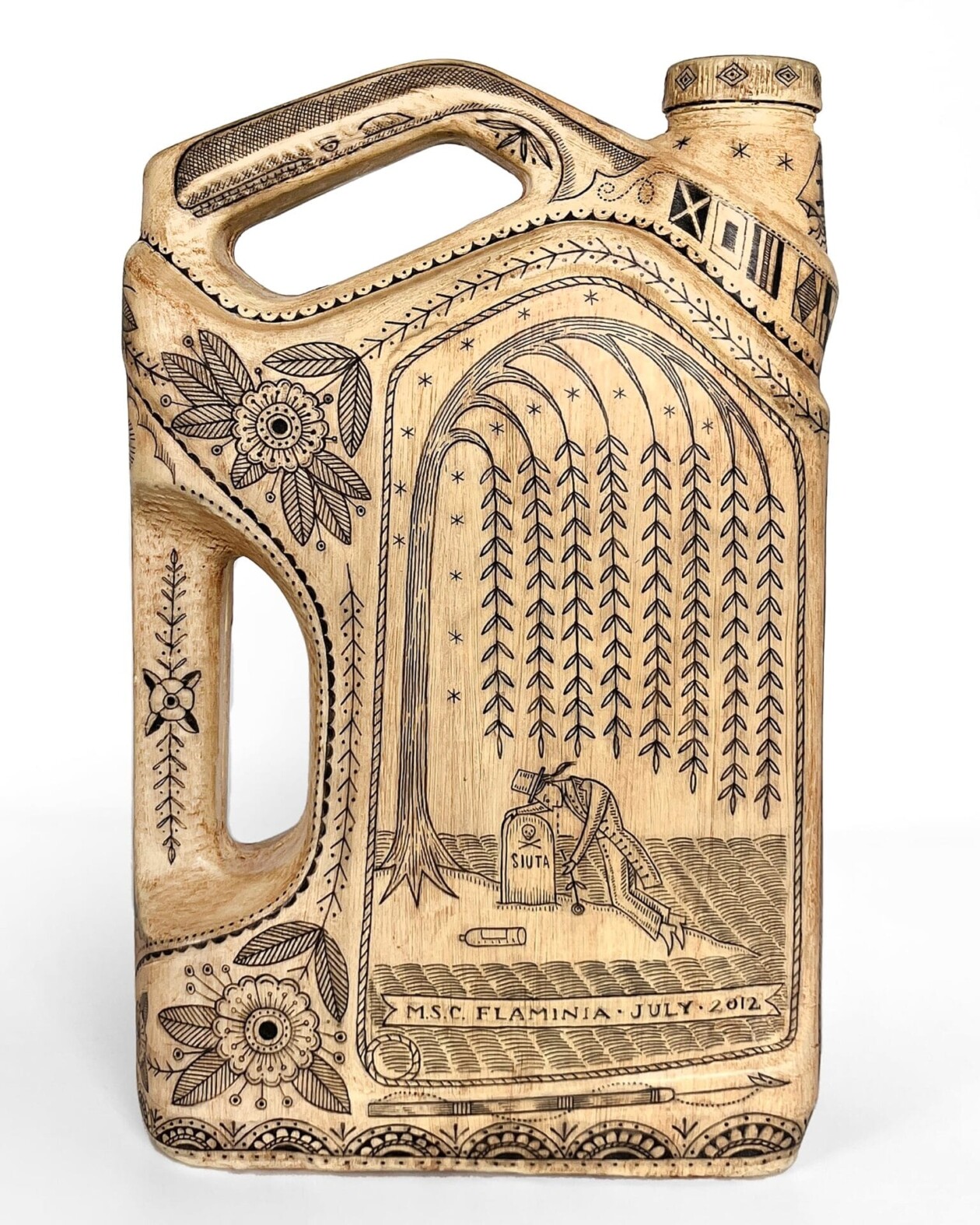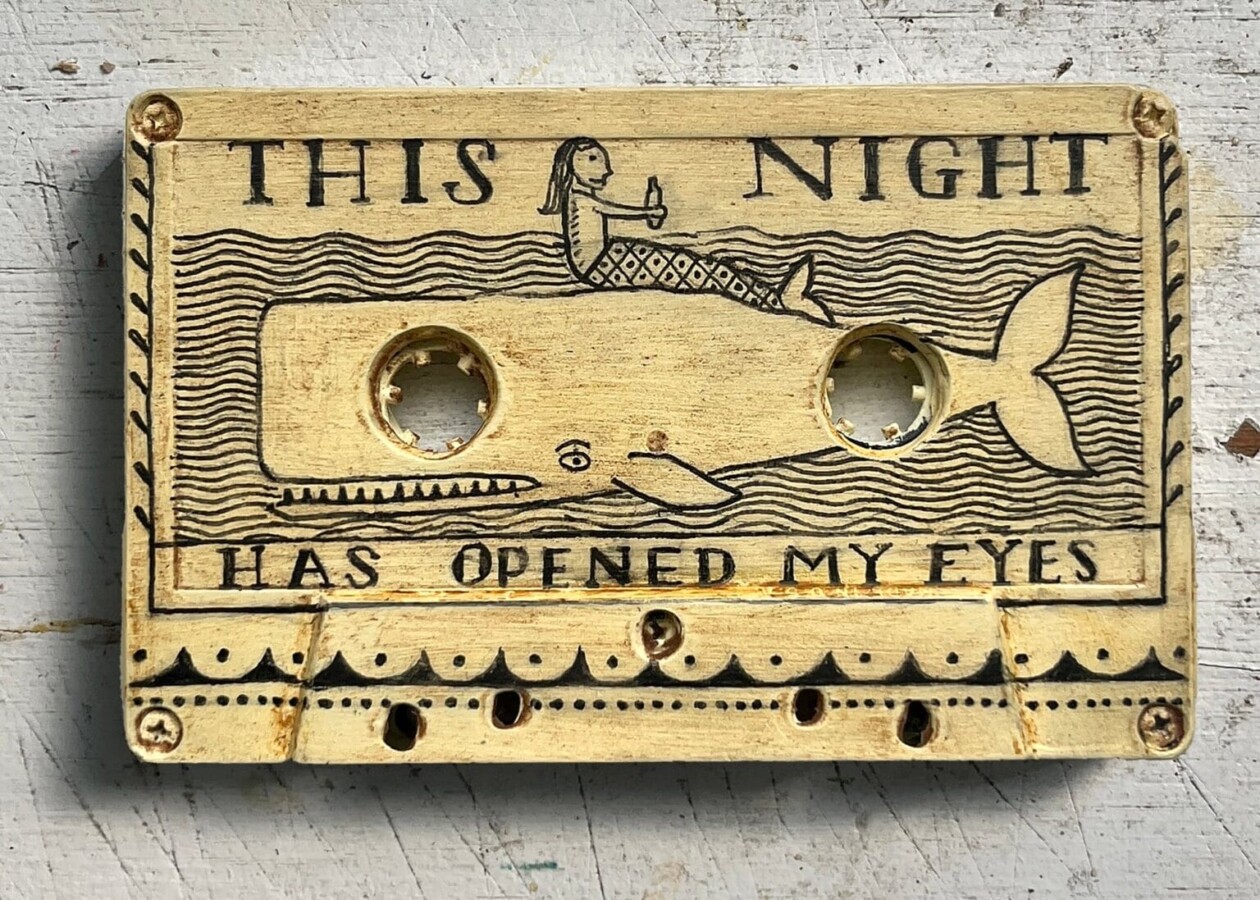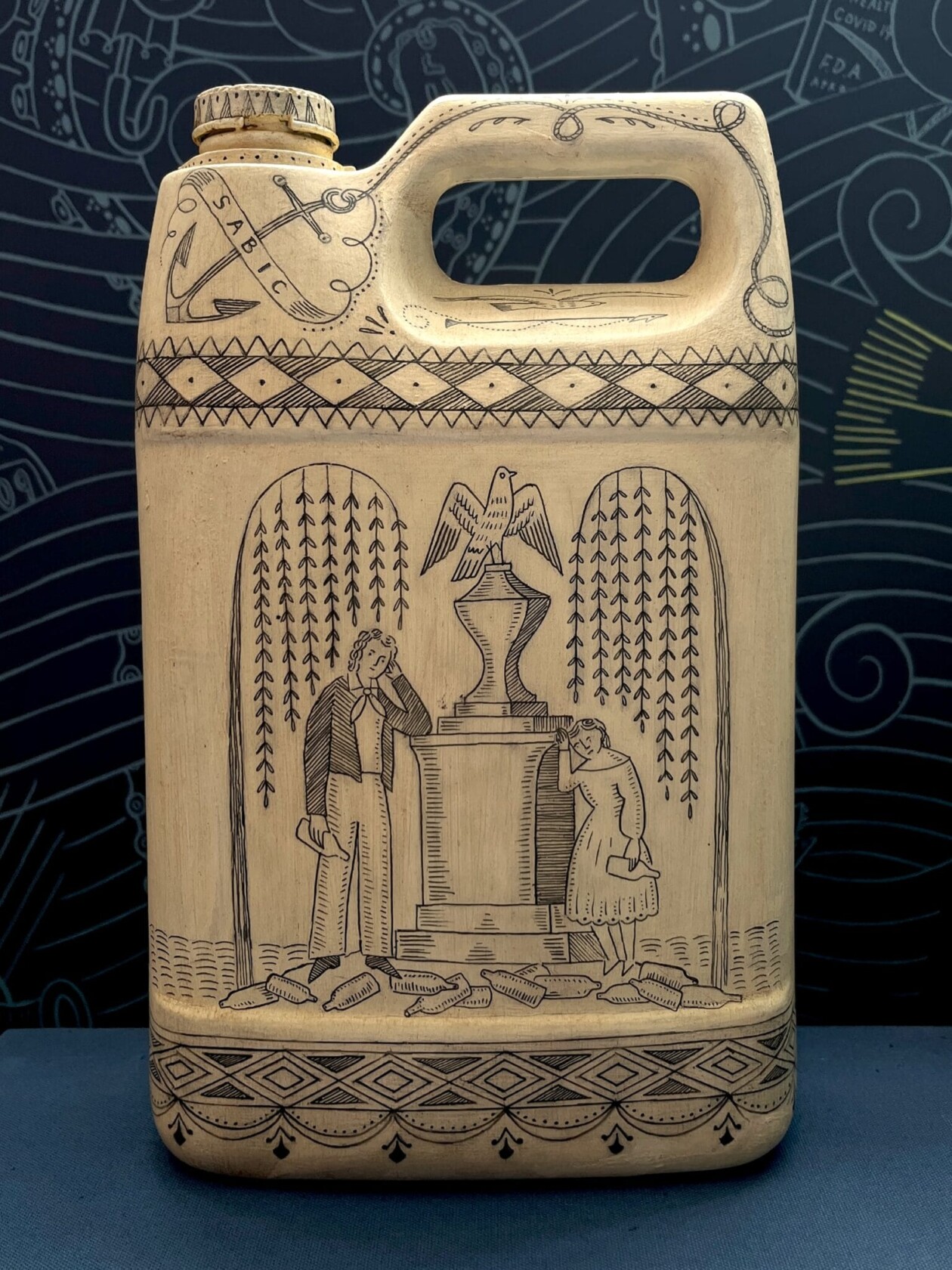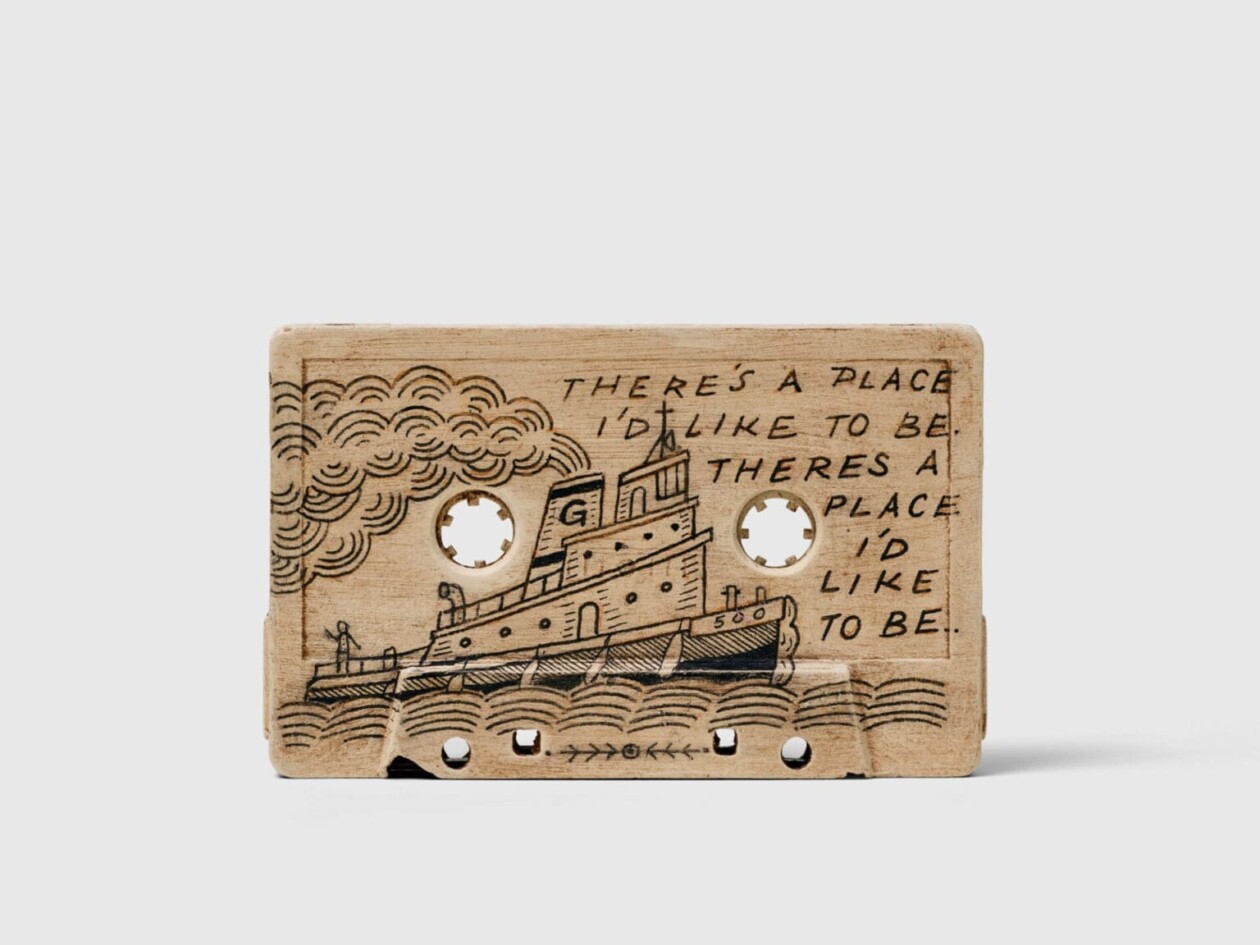In the 1860s, the U.S. government introduced kerosene as an alternative for lighting lamps, replacing unsustainable whale oil. This transition from one harmful and extractive practice to another birthed a nautical art form known as scrimshaw — engravings traditionally made on bone or ivory by sailors. Artist Duke Riley, attuned to this history, gathers discarded plastic waste — laundry detergent jugs, flip-flops, and bottles that wash up near beaches — and carves incisive allegories and ornamentation into their surfaces. Painted in a warm, grainy beige, the scavenged plastic mimics the whale bones typically used for scrimshaw. Riley’s contemporary narratives intertwine oil barons and marine creatures carrying human trash, highlighting the environmental impact of unchecked consumption.
Having grown up in New England, Riley frequented maritime museums with his family, where he encountered scrimshaw art. Inspired by the marine, folk art aesthetic, he now distorts plastic containers designed for single-use consumption. His engraved sculptures, part of the Poly S. Tyrene Memorial Maritime Museum, position plastic waste as relics of our time, outlasting humanity and serving as poignant reminders of our ecological choices. Riley’s transformation of discarded materials challenges us to reconsider our relationship with the environment and confront the consequences of extractive practices.
More info: Website, Instagram.
